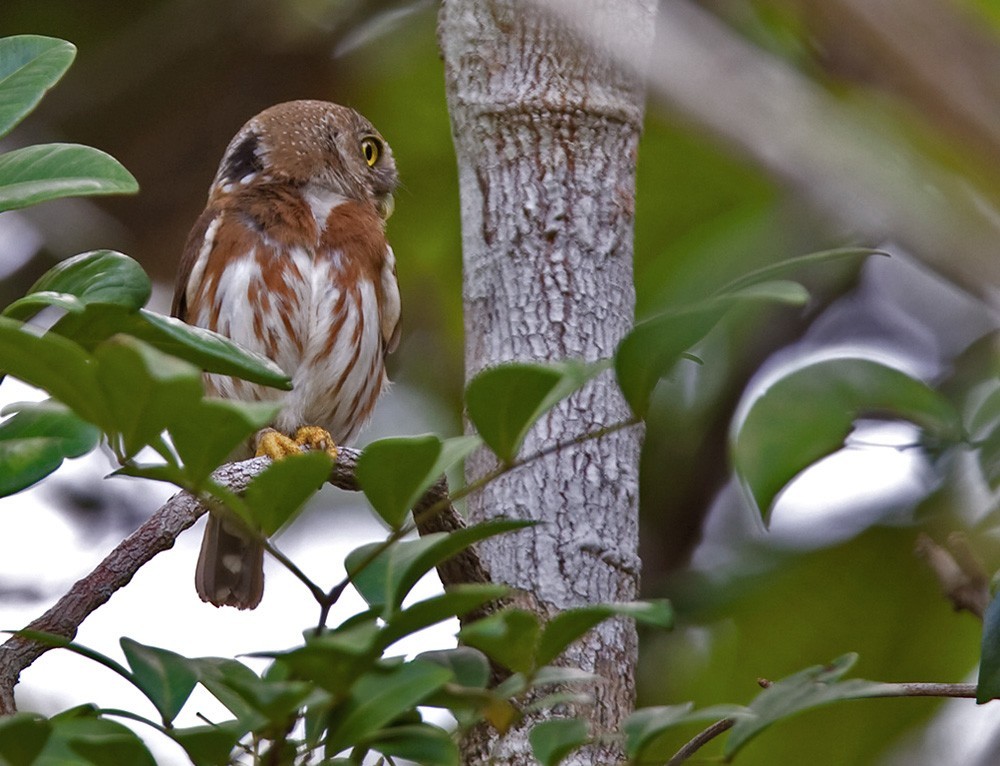Least Pygmy-owl
A species of Pygmy-owls Scientific name : Glaucidium minutissimum Genus : Pygmy-owls
Least Pygmy-owl, A species of Pygmy-owls
Botanical name: Glaucidium minutissimum
Genus: Pygmy-owls
Content
Description General Info
 Photo By Lars Petersson
Photo By Lars Petersson Description
It is one of the smallest South American owls, averaging at 55 grams (1.9 oz) and 15 cm (6 in). Wing length can reach 85–91 millimetres (3.3–3.6 in), while the tail can reach a length of 49–54 millimetres (1.9–2.1 in). The head is rounded, with no ear tufts. The pale greyish-brown facial disk is not pronounced and shows some rufous concentric lines. The eyes are yellow, with whitish eyebrows. The upper part of the body is relatively dark, rufous-brown with small white spots. Wings are dark brown and relatively short. The tail is dark brown with five pale bars. The lower part of the body is light gray or white, with reddish-brown stripes. The throat shows a rounded whitish area. The legs are feathered, with bristled and yellowish toes. Claws are horn with dark tips. The beak is yellow-green. 
Size
15 cm
Nest Placement
Cavity
Feeding Habits
Least Pygmy-owl's diet includes insects, small lizards, and birds. Its short tail and agile flight suggest predominant insect consumption. Least Pygmy-owl exhibits diurnal and nocturnal activity, employing a perch-and-pounce hunting method.
Habitat
The least Pygmy-owl predominantly resides in tropical and subtropical moist evergreen forests, often frequenting the forest canopy and edges. This species is typically found from sea level up to 1000 meters in elevation, but it is mainly observed between 500 and 800 meters, especially within the Atlantic rainforest region. Despite a preference for primary forests, data on its habitat specificity is somewhat limited.
Dite type
Carnivorous
General Info
Feeding Habits
Bird food type
Distribution Area
This species has a very large range. It can be found in eastern Brazil, in far eastern Paraguay, in Belize, Bolivia, Colombia, Costa Rica, Guatemala, Honduras, Panama, and Peru. 

 Photo By Lars Petersson
Photo By Lars Petersson